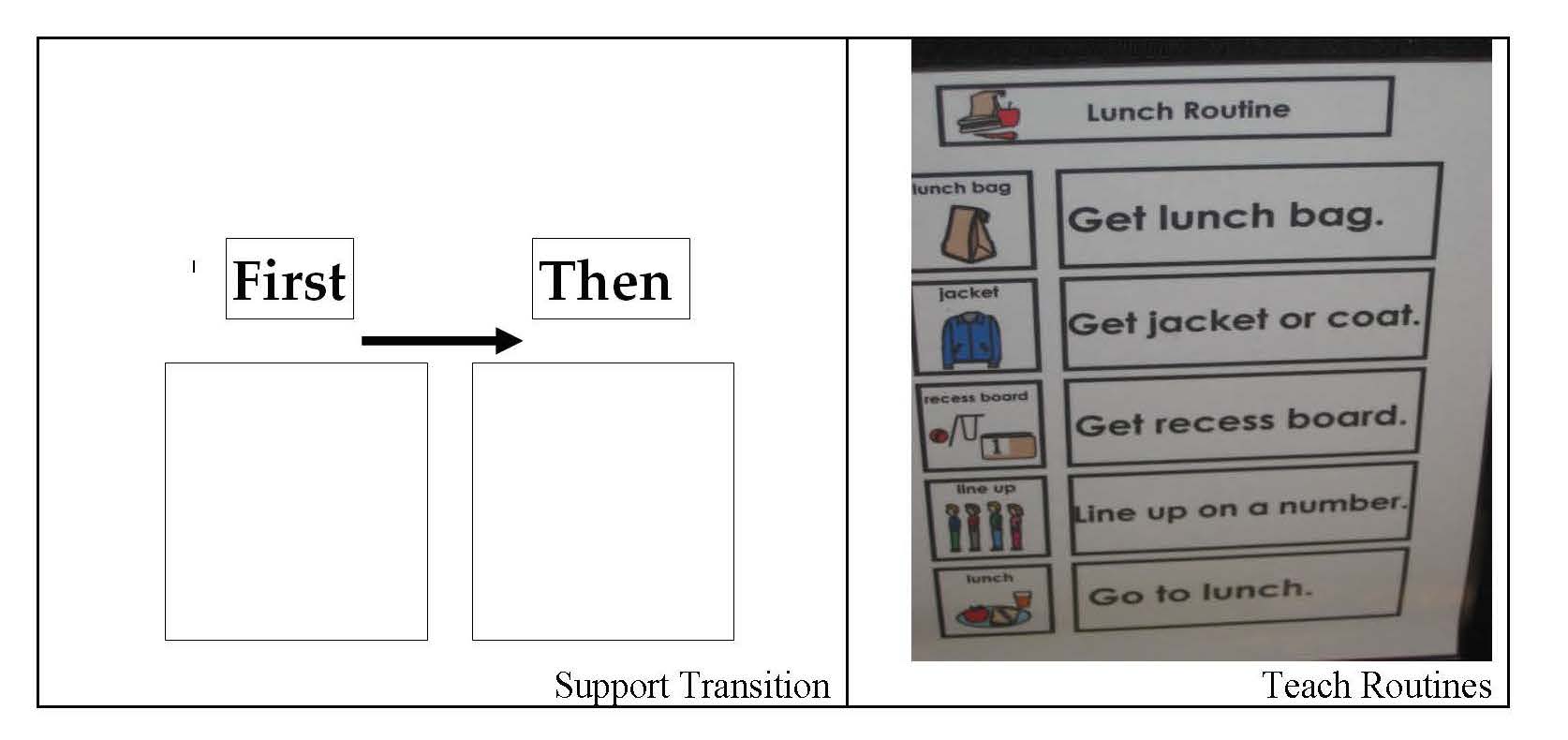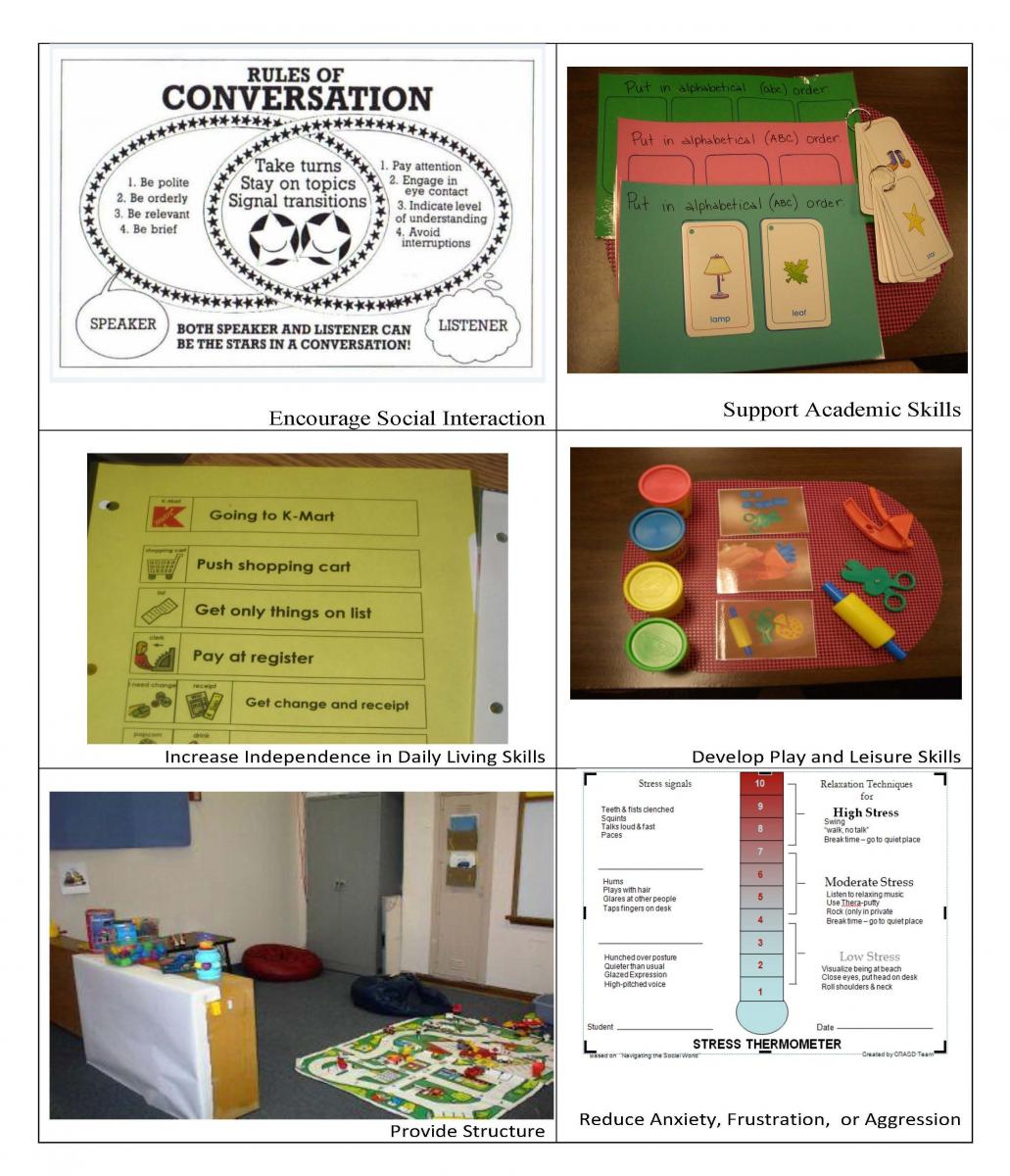Visual Supports Dawna Sigurdson

Supporting files
While there is no one strategy that can be used universally with individuals with autism spectrum disorders (ASD), research has shown that many individuals demonstrate strength in visual learning. Visual supports are any tools presented visually to provide assistance to individuals to help them function throughout the day. Visual supports can be implemented with individuals across the life span from preschoolers to adults. In addition, visual supports can be used in the school, home and community settings. Visuals are more permanent and can be more concrete than speech. They are static or “stay put” cues that are readily available to those who need them. Visual supports can replace or complement verbal instruction.
Visual supports have a variety of purposes including:
- Increasing task engagement
- Teaching routine, time concepts and organization
- Providing the ability to make requests or choices
- Supporting transition from one task or activity to another
- Encouraging social interaction
- Providing structure
- Developing play and leisure skills
- Increasing independence in daily living and work skills
- Reducing frustration, anxiety and aggression
- Supporting academic skills
- Providing boundaries
Visual supports examples:
